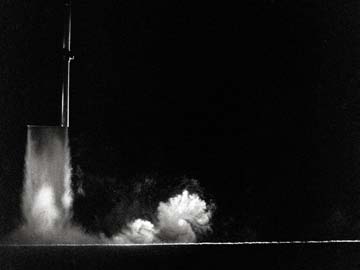Research
Wind Engineering is a wide ranging multi-disciplinary subject that has developed over the last few decades, and is concerned with the effects of wind on the natural and built environment. These effects can be both catastrophic, leading to the failure of major buildings or other structures, or can lead to discomfort and disruption. However, the wind can also have a number of beneficial effects not least of which is the opportunity to provide a clean and renewable source of energy.
The research interests of the group are wide and varied but can loosely be divided into the following categories:
- Full-scale measurements
- Coherent structures analysis, particularly associated with extremes of wind loading and dispersion
- Wind / Vehicle interactions, including on elevated structures such as embankments and bridges
- Characteristics of extreme non-synoptic winds
- Wind effects on the built and natural environment
- The impact of wind storms and climate change on society, particularly the built infrastructure
Full-scale measurement
All Wind Engineering studies are underpinned by an understanding of the real environment, which is complex. Often full scale measurements are the only practical solution even despite the higher costs. Using an internationally recognised field site the group is seeking to develop the understanding and scientific descriptions of the wind environment for the future of engineering construction, wind power, atmospheric pollution control and transport safety as well as human comfort both inside and outside buildings.
We have a long history of modelling the interaction of wind on the built and natural environment. Our full scale expertise is not only restricted to the built environment, for example, we have expertise in monitoring and modelling the interaction of the wind with both trees and crops. A significant proportion of our work in this area is used extensively by industry.
Characteristics of extreme non synoptic winds
Until recently there was a tendency to assume that we understood all that we need to know about windstorms, their origins and characteristics. In fact, it was assumed that all the extreme winds were largescale synoptic winds, with boundary-layer characteristics remarkably similar to those found in boundary-layer wind tunnels! This is far from the truth. A good example is extreme winds produced by thunderstorms.
During the last few years, the international wind engineering community has come to realise that the short intense gusts caused by thunderstorms and other non synoptic winds have a major effect on structures, forest plantations and arable crops and there is a need to better understand the nature of these gusts to enable more appropriate design of structures to be carried out, more efficient shelterbelts to be developed etc.

We have recently constructed a large scale experimental rig in order to examine in detail the flow characteristics associated with thunderstorm downbursts. The scale of this facility is truly unique and offers the potential for ground breaking research to be undertaken.
Interaction of wind and vehicles
Over the years the effects of high winds on road and rail vehicles have become of increasing concern to transportation system operators. Cars, high-sided lorries and trains can be at risk of a wind-induced accident on exposed sites such as embankments or long span bridges. We are currently working on a number of different projects to try and understand the interaction between the wind and vehicles in addition to developing new systems to enable risk evaluation.
Coherent Structure Analysis
A knowledge of near ground turbulence is required for a variety of environmental and engineering applications. In the past it has been assumed that turbulence parameters could be described in conventional statistical terms through means, standard deviations, correlations, spectra etc. However, there is a growing body of evidence that for high speed wind flows over smooth rural terrain, small and medium scale coherent structures can be identified, particularly at the occurrence of extreme gusts. Such structures have been observed at laboratory scale but their form at full scale remains elusive.
In the future we envisage working in the following areas:
- The measurement of train slipstreams and wakes
- Pedestrian level winds and corresponding comfort criteria
- The determination of wind gust factors
- The effect of weather conditions on atmospheric pollutant levels
- Wind loading codes, a comparison with full scale measurements
- Understanding extreme wind events
- Physical simulation of thunderstorm downburst events
- Evaluation of the wind induced forces and corresponding flow field around a high speed train
- Small scale, building integrated wind power systems
- Wind storms and Disaster Management
If you would like to know more about the topics outlined above or other possible research areas, or if you have any ideas of your own and wish to discuss them, then please feel free to contact us.